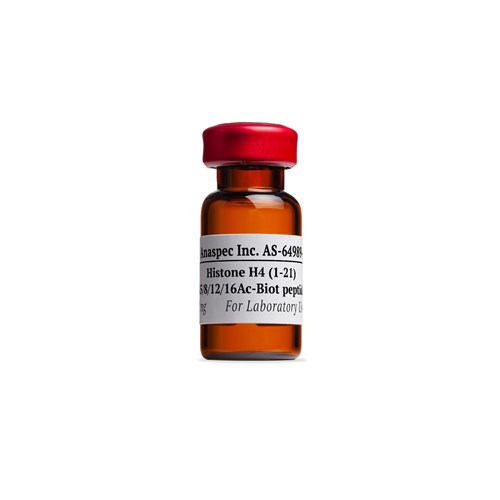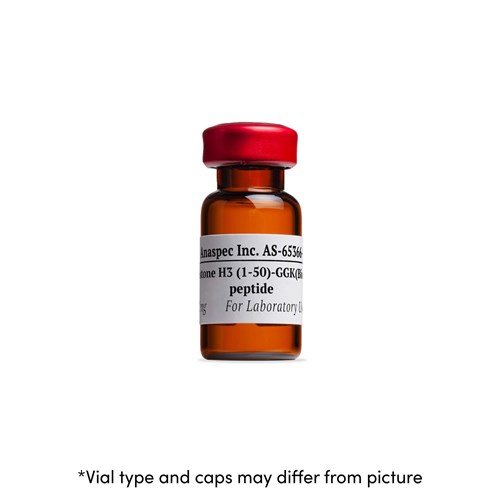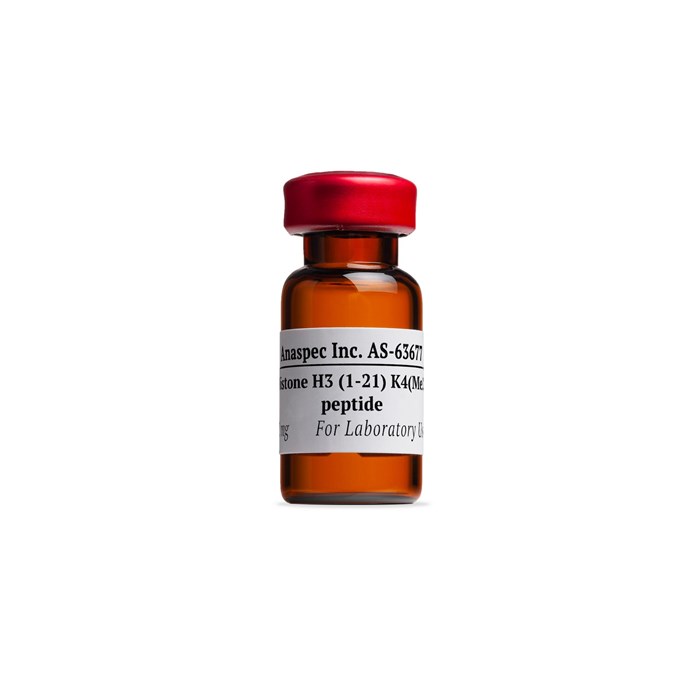[Lys(Me2)4]-Histone H3 (1-21) - 1 mg
- Cat.Number : AS-63677
- Manufacturer Ref. :
-
Availability :
In stock
Alternative choices
This is a dimethylated lysine at position 4 of the 1-21 amino acid histone H3 peptide. This form of histone methylation is characterized as being enriched around transcription start sites (TSS). It has been observed that a subgroup of genes linked to T cell functions showed high levels of H3K4me2 within their gene body. While enrichment for H3K4me2 within the gene body is a characteristic trait of expressed genes in yeast, in contrast, H3K4me2 has been shown to be predominantly enriched around the TSS in mammals.
Specifications
| Chemistry | |
| Sequence one letter code |
|
|---|---|
| Sequence three letter code |
|
| Molecular Formula |
|
| Molecular Mass/ Weight |
|
| Modification | |
| Conjugation |
|
| Quantity & Purity | |
| Purity |
|
| Storage & stability | |
| Form |
|
| Storage Conditions |
|
| Activity | |
| Biomarker Target | |
| Research Area | |
| Sub-category Research Area | |
| Usage |
|
| Source | |
| Source / Species |
|
| Codes | |
| Code Nacres |
|
Downloads
You may also be interested in the following product(s)



Citations
Measurement of lysine-specific demethylase-1 activity in the nuclear extracts by flow-injection based time-of-flight mass spectrometry.
J Clin Biochem Nutr . 2015 Feb 13 ; 56(2) 123 | DOI : 10.3164/jcbn.14-99
- C. Sakane
- et al
